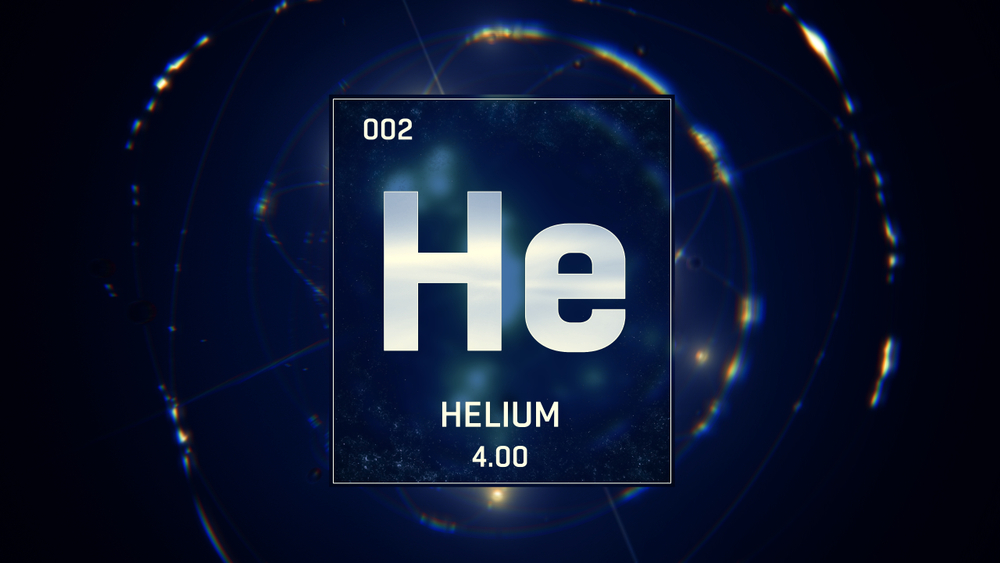With 2025 going well, the global helium shortage is becoming more severe, creating challenges across healthcare, technology and aerospace.
The surge in demand, strengthened by geopolitical tensions and aging extraction infrastructure, has sparked urgent concerns about the sustainability of helium supply. Advances in recycling and recovery technologies offer some hope, but the high costs associated with these solutions may limit their widespread adoption.
The way industry responds is important in navigating the complexity of this increasingly scarce resource.
The role of helium in healthcare and technology
Helium plays an important role in the medical field, particularly in the operation of MRI machines. This requires approximately 2,000 liters of liquid helium to function efficiently. Its inert properties make it ideal for use in sensitive medical environments and ensures safe and reliable diagnostic imaging.
Healthcare accounts for around 32% of global helium consumption. Beyond MRI scanners, helium is important for technologies such as nuclear magnetic resonance (NMR) machines, relying on gas to increase imaging clarity and diagnostic accuracy. As medical imaging technology evolves, so does helium demand, highlighting its important role in modern healthcare systems.
However, the ongoing helium shortage threatens to undermine the availability and affordability of critical imaging procedures. A decrease in helium supply slows diagnosis, affects patient care, and strains the already overloaded healthcare system.
To address these challenges, the healthcare industry must adopt a more sustainable helium management strategy. Increased recycling efforts, contingency plans, and the pursuit of viable alternatives are essential to ensuring long-term resilience while maintaining access to life-saving technology.
Causes of helium deficiency
The helium deficiency comes from a combination of natural constraints and geopolitical disruption. Helium is not directly mined, but is extracted as a by-product of natural gas processing. This is a process limited to a small number of facilities around the world. This makes the supply chain inherently vulnerable.
Geopolitical factors only reinforce the problem. Sanctions affecting Russia’s exports, for example, have disrupt global distribution channels and deepen supply and demand imbalances. Furthermore, the output from the once critical source of US federal helium reserves has declined, contributing to market instability.
What’s worse is delays and setbacks at major production sites, such as the Amur Gas Processing Plant in Russia’s Gazprom, which was expected to increase global supply. Aging infrastructure at existing extraction facilities also frequently caused confusion.
These challenges highlight the pressing need for coordinated global efforts and investments in new extraction and recovery technologies. Without strategic action, industries around the world will continue to face helium-related constraints.
Economic impacts across major industries
As helium is less, its economic impact is felt across multiple sectors. Prices have increased by 50-100% since early 2022, driven by sustained shortages and market instability.
The semiconductor industry, the backbone of modern electronics, is particularly vulnerable. Helium is essential for the cooling and etching processes used in chip manufacturing. Supply disruptions and rising costs slow down product rollouts, threaten to inflate appliance prices, and ultimately slow technological advances.
Medical facilities are also feeling economic tension. Increased helium prices lead to increased operating costs, particularly for MRI and NMR systems. This could lead to increased health costs, reduced access to critical diagnostic services, and widening health disparities.
In aerospace, the role of helium in rocket propulsion and equipment testing is essential. The shortage leads to delays in projects and overruns in budgets, poses risks to both commercial ventures and scientific missions.
Recycling and Conservation: The Road to Move
In response to the growing crisis, industry is increasingly changing to helium recycling and preserving. With demand expected to double by 2035, it is more important than ever to use existing supply efficiently.
The latest helium recovery system can recover up to 90% of the spent helium. However, initial investment can be a barrier, especially on small facilities. Despite the costs, long-term savings and recognition of environmental benefits drives recruitment among major companies.
A major industry player is pioneering regeneration technology that improves the efficiency of extraction and reuse. Parallel research into alternative superconducting materials that do not require helium is also promising.
It is important to broaden awareness of the importance of helium protection. Many stakeholders do not recognize the economic and operational benefits of sustainable practices. Promoting industry-wide adoption could significantly reduce pressure on global supply.
The future of helium supply
Conservation efforts are extremely important, but future supply dynamics will depend on new sources and technical breakthroughs.
New helium reserves in Tanzania and the Bohai Bay Basin in China provide further promise, but require long-term investment and infrastructure development. These projects take years to come online, require careful planning and global cooperation.
Additionally, major initiatives such as the Pulsar Helium Topaz project provide exciting and abundant helium resources with enhanced paths to production.
Meanwhile, recovery technology continues to evolve. If widely adopted, they can alleviate some of the shortage. However, high costs and technical barriers can slow mainstream implementation.
In the face of ongoing market volatility and supply chain disruption, the industry needs to diversify its procurement strategies and invest in alternatives. Long-term solutions depend on balancing immediate needs with sustainable practices that ensure the future of helium for future generations.
Source link

